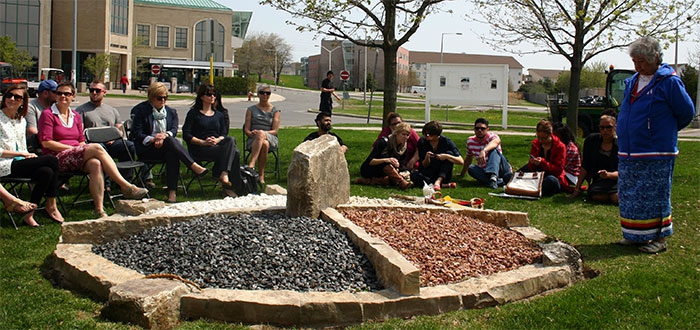
The Medicine Wheel is an iconic part of Aboriginal history, which holds varying spiritual meanings for different people. In 2014, Durham College’s (DC) Aboriginal Student Centre unveiled its own Medicine Wheel rock garden, settled on the north-west edge of the bus loop island.
The rock garden celebration, led by Elder and member of the Bird Clan, Shirley Williams, began with a story of her childhood and the importance of the Medicine Wheel.
The celebration continued with Williams sprinkling tobacco around the rock garden, an offering of prayer, acting as a medium for communication. Next, the burning of sage, typically used to rid of bad spirits or feelings, followed by the offering of water to on-lookers. This ritual is typically used to cleanse the soul and restore positive thoughts.
The medicine wheel is commonly used as a teaching tool. There are four quadrants to the wheel, facing in the four cardinal directions, which represent different aspects of life and highlight the importance of staying connected: